Syn.: Anchusa hybrida Ten., Anchusa parnassica Boiss. et Orph., Anchusa aspera sensu Halácsy, non Boiss., Anchusa macrocalyx Hausskn.
Family: Boraginaceae Juss.
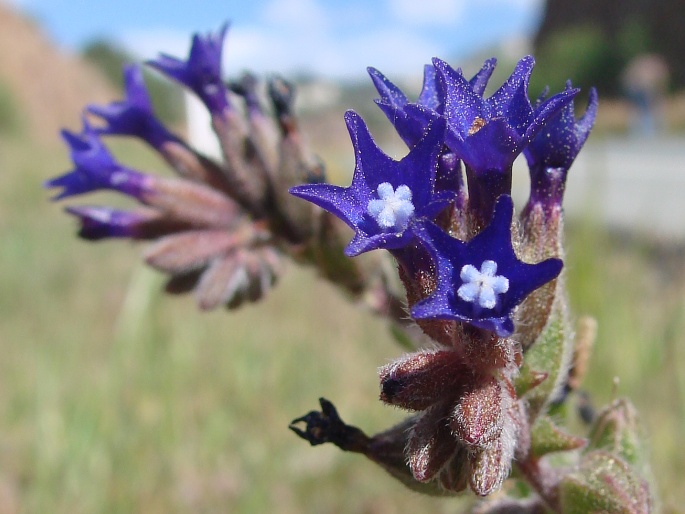
Distribution: Mediterranean species Anchusa undulata was described by Linné from Spain, the nominate subspecies is endemic to the Iberian Peninsula and on this peninsula occurs also subspecies A. u. subsp. granatensis (Boiss.) Valdés. Anchusa undulata subsp. hybrida occurs in the rest of the Mediterranean.
Ecology: It grows as a weed in fields, in vineyards and orchards, also in areas disturbed by humans, in elevations from 100 to 1800 m asl. It flowers from March to June.
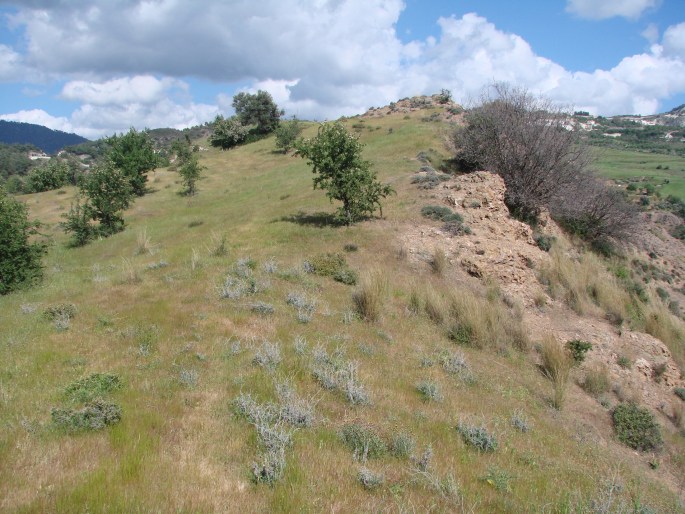
Description: Biennial or perennial herb, 10–50(–65) cm tall, hairy. Stem erect, simple, usually branched only in inflorescence. Basal leaves petiolate, up to 19 cm long and about 2.5 cm wide, cauline leaves smaller, sessile, alternate, all lanceolate to elliptic, entire, often sinuate-dentate and undulate. Cymes several, dense, pedicels very short; bracts shorter than calyx, ovate-lanceolate, cordate at base; calyx 5–10 mm, up to 15(–20) mm in fruit; corolla tube 5.5–10.5 mm long, limb 3–5 mm in diameter, blue, blue-violet or purple and rarely white; stamens inserted about middle of tube and not reaching scales. The fruits are nutlets.
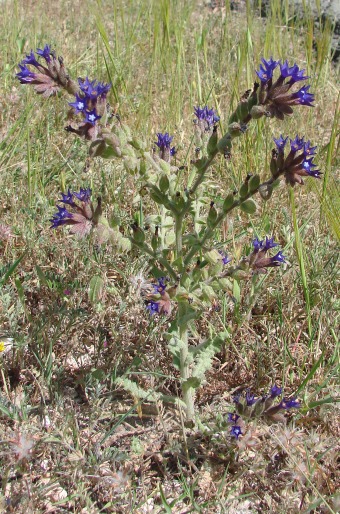
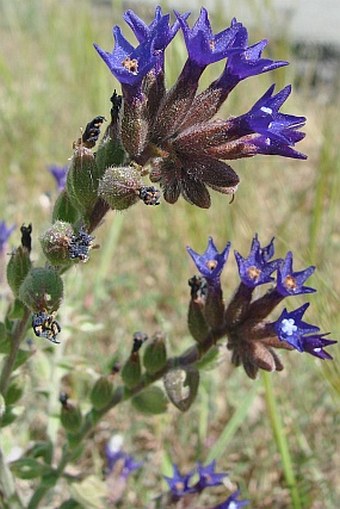
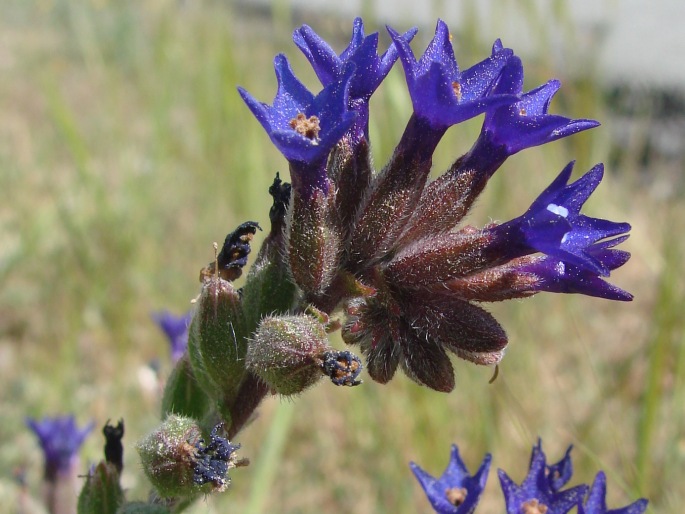
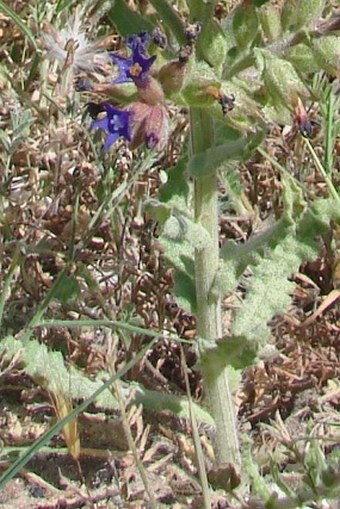
These images were taken in Cyprus, Paphos (March 29, 2010).


